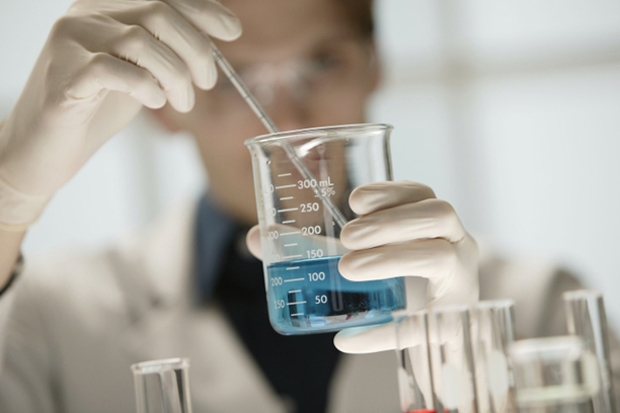In 2008, when Taylor Wilson was 14, he created a working nuclear fusion reactor, ‘a miniature sun on earth’. At 17 he entered his home-made radiation detector for inspecting cargo at the Intel International Science and Engineering Fair; his project was entitled ‘Countering Nuclear Terrorism: Novel Active and Passive Techniques for Detecting Nuclear Threats’. In a field of 1,500 entries, it swept the board.
Winning the war against terror isn’t Taylor’s only ambition. He plans to provide affordable, sustainable energy for the whole planet, not to mention beating cancer. Aged 11, he watched his beloved grandmother withering from lung cancer, and became convinced that it was up to him to do something about it. Always his enabler and ally, Grandma gave Taylor a urine sample. ‘I checked it with a Geiger counter and it was so hot from the diagnostic isotopes that I had to keep it in a lead pig [a shielded container for storing isotopes].’ Things went even further:
She’d cough up little bits of tumor for me to dissect… I figured out how to make a serum. I put in nutrients like what you find in blood serum, salts and proteins. Then I put the cancer cells in the medium and cultured them and got them to grow.
As you do.
Everyone is astounded by Taylor, from Obama to Nobel prize-winning physicists to the neighbours back home in Texarkana, Texas, for whom he created a special backyard display: ‘The Russians call this the Father of All Bombs. It should be more of a fireball than an explosion… but just in case, stand back.’ But for Tom Clynes, the science journalist who shadowed Taylor for an extended period, Taylor’s parents are ‘even more impressive’ in the lengths they went to and the risks they took to ‘support their son as he pursued his unnerving interests’. Clynes’s book is as much about ‘extreme parenting’ as it is about nuclear science.
It was not obvious that Kenneth and Tiffany Wilson would produce not one but two child geniuses — Taylor’s younger brother Joey is a maths prodigy and introverted, whereas Taylor is a great showman, and it has to be said that it’s Joey who usually gets the fuzzy end of the family lollipop.
Kenneth runs a Coca-Cola bottling plant. Tiffany is a yoga teacher. ‘Neither of us knows a dang thing about science,’ says Kenneth. But with infinite faith and patience they allowed Taylor to turn the garage into a laboratory, and took him on expeditions that would feed his passions. We see Kenneth driving the family Land Rover into mountains in Nevada to collect the uranium ore that is, disconcertingly, there for the picking. ‘Liquid uranium,’ Taylor exclaims appreciatively: ‘I wonder if it’s coming off some autunite up above. It’s a fluorescent mineral, hydrated calcium uranyl phosphate, pretty rare ’round here.’
Then it’s Tiffany’s turn. With Taylor, she scours the New Mexico mesa for fragments of Mark 17, a 40-ton hydrogen bomb that smashed its way out of a B-36 en route to Albuquerque in 1957. According to official sources, all traces of this near-disaster were removed, but ‘you kinda gotta read between the lines’, explains Taylor airily:
Completely removed means something like ‘we bulldozed most of the stuff into the crater, covered it, then took a cursory look around’.
The Wilsons retrieve a trunkful of radioactive bomb fragments. They tape them into a ‘too-flimsy’ box and check it onto the plane.
Are the Wilsons marvellously supportive or criminally irresponsible? There is no doubt which side Clynes comes down on. He makes an impassioned plea for gifted children, who, he believes, are grossly neglected by the American education system:
By refusing them an education that is appropriate to their abilities we are potentially hobbling our economies and denying our civilisation its next generation of innovators.
Thwarting a genius is not only a waste of talent, it also potentially turns him (or her) into a dangerous sociopath.
This book can be read with interest by a scientific dunce like me. Clynes’s outline of nuclear fission versus fusion, for instance, is a model of clarity and concision. I suspect that the social difficulties that accompany genius are more serious than tact allows him to explore. We get a telling glimpse of a girl who won’t date Taylor because she didn’t like ‘the way he was treating people’ — and many questions about the safety of his activities remain unanswered.
But it would be a weary reader indeed who failed to get caught up in the excitement generated by Taylor’s ‘manic, metastasising curiosity’.






Comments